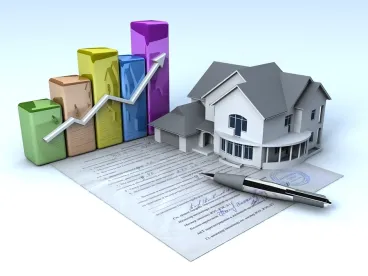For the past five years or so, two words have become commonplace in Sacramento and throughout California: “housing crisis.” Everyone seems to acknowledge that we have one. Most people agree that we should try to address it. Few seem to agree on how. The 2020 legislative session, like several before it, began with promise. Governor Newsom has proclaimed his support for lofty goals in terms of unit production. Democrats and Republicans alike seem to agree that the cost of housing is crippling the state, contributing to the homelessness problem, hindering economic growth, and causing homegrown companies to move or consider moving to lower-cost states. However, with COVID-19 and emergency measures taking center stage, many housing bills ended up on the cutting room floor. One bill that did make it through, AB 2345, is modeled after a successful program already implemented in San Diego that increased housing production in the city. Coupled with mandatory Housing Element updates required for the Sixth Regional Housing Needs Assessment Cycle in major jurisdictions, there is some hope on the horizon for developers looking for opportunities.
Changes Brought By AB 2345
AB 2345 amended the State Density Bonus Law (DBL), found in Government Code 65915. The purpose of the DBL, enacted in 1979, is to encourage cities and counties to offer density bonuses, incentives, and waivers to housing developments that include certain percentages of affordable units. As recognized by California courts, the DBL rewards a "developer who agrees to build a certain percentage of low-income housing with the opportunity to build more residences than would otherwise be permitted by the applicable local regulations." (Friends of Lagoon Valley v. City of Vacaville (2007) 154 Cal. App. 4th 807, 824.) By incentivizing developers, the DBL promotes the construction of housing for low-income families, seniors, students, and other disadvantaged segments of the population.
Effective January 1, 2021, AB 2345 increases the bonus to developers who are willing to develop additional affordable units. The current law’s maximum bonus of 35% is incrementally increased up to 50% if the project increases its very-low-income units from 11% up to 15%, or low-income units from 20% up to 24%, and moderate-income market-rate units from 40% to 44%. In a state that presents challenges relating to land values, environmental concerns, labor, and material costs (among many others), those extra units may make the difference between a project that gets built and one that gets shelved.
Required Housing Element Updates
Local governments (cities and counties) are required to plan for local housing needs by adopting and updating the “housing element” of their General Plan. In particular, the planning process requires cities and counties to implement the Regional Housing Needs Assessment (RHNA), which includes estimated unit counts that will be needed at various income levels. While the RHNA allocations have been hotly debated, and led to multiple lawsuits, the time for implementation is nearly upon us. The last comprehensive revision to the state’s Housing Element Law (Government Code sections 65580-65589.8) occurred in 1980, and with roughly eight-year cycles, many local governments are now faced with planning for the Sixth Cycle Housing Element Updates (HEUs) that are due over the next several years.
Local governments across the state have staggered deadlines that began in 2019 (with some of the smaller counties), and the first regional council of government, the San Luis Obispo Council of Governments (SLOCOG) has updates due on December 31, 2020. San Diego County and the 18 member cities of the San Diego Association of Governments (SANDAG) are due to submit HEUs by April 15, 2021, followed by Sacramento (SACOG) on May 15, 2021, and Southern California (SCAG) on October 15, 2021. Other smaller jurisdictions follow in 2022, the Bay Area, Santa Barbara, Monterey, and others set for review in 2023. Current estimates from HCD for timing for all jurisdictions can be found here.
As part of the update process, properties identified in HEUs are frequently upzoned, resulting in increased base densities. Although an extreme example, it is possible that properties that were previously zoned for one unit per acre could see an increase to twenty or thirty units per acre. Longtime owners might suddenly be incentivized to sell or redevelop their properties.
Recent changes to state law have made this process more complicated for cities as they seek approval from the Department of Housing and Community Development (HCD) for proposed updates. Take, for example, the changes in AB 1397, a 2017 amendment to California law that imposed restrictions relating to the identification of non-vacant land, as well as sites that had been listed in prior housing elements but did not yield new development. AB 1397 also requires cities and counties to analyze sites’ development potential, infrastructure availability, and their own history of imposing or allowing constraints on development. The 2018 passage of AB 686 imposed a requirement that public agencies take actions that are “affirmatively furthering fair housing” in an effort to address racial, ethnic, and economic disparities.
With these additional layers of analysis, the hope is that the HEU process will yield helpful analysis and thoughtful planning for the next decade.
DBL + HEUS = Housing Production?
Some have said that the beauty of the DBL is that it uses carrots, rather than sticks, to incentivize the production of affordable housing, and creates more market-rate units in the process. The added bonuses available from AB 2345 could unlock properties and projects that just didn’t pencil before. Similarly, although cities and counties are required to update their housing elements to plan for new housing, the HEU process does not require or guarantee construction. Newly upzoned properties, or even properties that are being considered in the HEU process, may prove to be fertile ground for developers looking to take advantage of the increased density bonuses available from AB 2345. Land acquisition teams, brokers, and others hunting for new deals would be wise to pay attention to the intersection of these coming changes in 2021.




 />i
/>i
